What would you do if you needed to connect two TVs via a single coaxial cable, or if you wanted to connect both your TV and computer to the same cable line? A coaxial cable splitter provides an economical and effective solution to these scenarios. This guide provides all the essential information about coax splitters.
Coaxial Cable Splitter Explained
Coaxial cable splitters are used to split a single cable line into several lines, allowing multiple devices to connect to the same signal source. A coaxial cable splitter generally has one input port and two or more output ports. It receives the input signal from the main coaxial cable and then the signal is usually split evenly across the output ports. For instance, each output of a coaxial cable splitter 2 in 1 out will receive half the power of the original signal. However, signal loss can occur during the signal transmission, resulting in slightly less power at each output.
Coaxial cable splitters are usually connected to a TV, cable modem, or other devices via a coaxial cable. Since cable TV networks typically use F connectors, coaxial cable splitters also feature F-type ports to ensure compatibility.
The port configuration is the most prominent feature of a coaxial cable splitter. In addition, frequency range, insertion loss, and impedance are also crucial characteristics. Entry-level splitters usually have a frequency range for antennas, while some cable splitters with a wider frequency range can be used for satellite applications. The rated insertion loss value is one of the key indicators of the splitter quality, affecting the signal strength received by the connected devices. Coaxial cable splitters typically have an impedance of 75 Ohm, whereas 50 Ohm splitters are used for RF and telecommunications applications.

Coaxial Cable Splitter Types and Uses
There are various types of coaxial cable splitters to meet specific requirements. Below are some key types of coaxial splitters:
- Coaxial cable splitters can be divided according to the number of ports. 2-way splitters are one of the most popular types. These coaxial splitters feature one input and two outputs. 3-way coax splitters have 1 input and 3 outputs. There are also coaxial splitters with more outputs like 4-way, 6-way, and 8-way coaxial splitters.
- MoCA splitter is a specific type of coaxial splitter designed to work with Multimedia over Coax Alliance (MoCA) technology. These coaxial splitters feature excellent isolation and low insertion loss, commonly used to extend your Internet with the existing coaxial cables. Unlike common coaxial splitters, these splitters can handle higher frequency range and signal requirements of MoCA devices.
- A standard passive coaxial cable splitter does not consume power. It only divides the input signals through the internal circuit and outputs them, causing minimal signal loss. Active coaxial cable splitters are a combination of coax splitter and amplifier, relying on external power sources to enhance the signal and ensure efficient operation.
- A splitter with the same insertion loss from the input to each output port is classified as a balanced coaxial cable splitter. Conversely, an unbalanced coaxial cable splitter has different insertion losses from the input port to each output port. The 3-way unbalanced coax cable splitter is a common model on the market.
- Vertical coaxial cable splitter features ports that are perpendicular to the metal box. These splitters can be easily mounted on walls or other flat surfaces.
Coaxial cable splitters are used in a variety of scenarios, such as CATV, HD cable TV, broadcast, and satellite TV distribution, home theater setup, and antenna systems. They can distribute signals from a single cable or satellite feed to multiple TVs or set-top boxes. They distribute audio and video signals from a single source to multiple devices. In RF and wireless communication systems, they separate signals from one transmitter to distribute to multiple antennas.
Common Problems of Coaxial Cable Splitter Usage
Poor Quality Splitter: A low-quality coax splitter can generate a low impedance reflection, resulting in a lot of signal loss; whereas high-quality splitters can minimize signal attenuation due to their design, materials, and internal components. Sometimes a coaxial splitter with an amplifier is conducive to avoiding the signal loss problem.
Excessive Splitting: The signal strength of a single source is limited. Excessive splitting will result in a weak signal at each output, affecting the signal transmission. Connecting multiple coaxial cable splitters in series (tandem connection) further degrades the signal quality. If possible, check the number of splitters used in the coax system to avoid overuse.
Incompatible Splitters: It’s crucial to consider the frequency range and function of the splitter. Using an incompatible splitter, especially for applications like satellite and Internet services, can cause compatibility issues and degraded performance. In addition, choosing the right coaxial cable is also essential for signal integrity and reliability.
Tips for Coaxial Cable Splitter Installation
- Choose the ideal coax splitter based on your specific application and the number of devices you want to connect. To meet the requirements of high-speed internet or HDTV, ensure that the splitter is of high quality and capacity.
- Find the wall outlet or main cable line and locate your coax cable splitter close to it. Remember to disconnect the line from all connected devices before installation.
- Measure the distance from the cable splitter to the devices to determine the necessary coaxial cable length.
- Consider using an amplifier if you need to run a coax cable 50 feet or longer.
- Fully tighten the cable, connector, and device to reduce signal loss. But be careful not to damage them.
- Once installed, turn on your devices to test the signal strength and make sure they are working efficiently.
Conclusion
A coaxial cable splitter is an easy-to-use hardware for distributing signals to multiple devices. It takes full advantage of signal resources, facilitating connectivity in television and internet systems. With a coaxial cable splitter, you can enjoy multi-channel entertainment without additional costs.
FAQs
Can a cable splitter be used in reverse?
Using a coax splitter in reverse may cause poor signal quality and impedance mismatch. It is recommended to use specialized devices.
Should I use a coaxial cable splitter or a tap?
Coaxial cable splitters are suitable for connecting devices with relatively equal cable running lengths, making them suitable for most home installations. A coaxial tap will distribute the signal strength depending on the length of the output cable run, making it suitable for use in neighborhoods or long hallways.
How do I know if the coaxial splitter gets bad?
Problems such as video signal loss, image distortion, and intermittent connection may indicate splitter damage. You can diagnose the problem by removing the splitter from the connection or replacing the coaxial cable with a new one. Other signs of a failing splitter may include overheating, moisture corrosion, etc.
For more information on this topic, you can keep up on our blogs. While VCELINK offers general and basic information for our customers and other visitors to the website, it’s not professional advice.
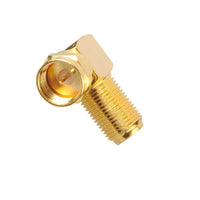
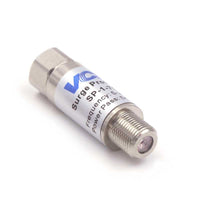
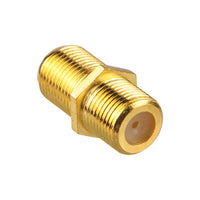
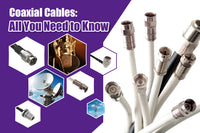
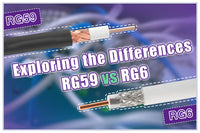

Be the first one to comment.
Leave a comment